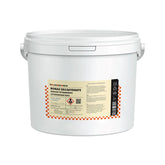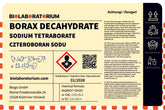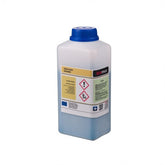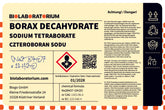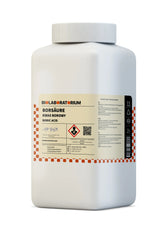Succinic acid – a fascinating organic compound
Succinic acid, also known as butanedioic acid or ethylenedicarboxylic acid, is an organic compound that is widely distributed in nature and has gained increasing importance in recent years. This doubly functionalized carboxylic acid possesses an interesting structure and reactivity that makes it a valuable building block in organic synthesis.
The Structure and Properties of Succinic Acid
Succinic acid is a saturated, aliphatic dicarboxylic acid with the molecular formula C₄H₆O₄. It consists of a chain of four carbon atoms, each bonded to a carboxyl group (-COOH). This arrangement gives the compound a linear structure and high polarity, which favors its solubility in polar solvents such as water.
In addition to its polarity, succinic acid is characterized by moderate acidity. With a pKa value of 4.2 for the first deprotonation and 5.6 for the second deprotonation, it falls within the range of weak acids. This property allows for the targeted use of acid-base properties in organic reactions.
Occurrence and Biosynthesis of Succinic Acid
Succinic acid is widely distributed in nature and plays an important role in various biological processes. It is an intermediate in the citric acid cycle, a central metabolic pathway in organisms that serves energy production. Additionally, succinic acid is also formed as a byproduct during the fermentation of carbohydrates by microorganisms.
In addition to its natural presence in living organisms, succinic acid can also be produced synthetically. Industrially, it is often obtained through the catalytic hydrogenation of maleic anhydride or through the fermentation of sugars using bacteria.
Applications and Uses of Succinic Acid
Due to its versatile properties, succinic acid is used in numerous application areas. One of the main fields of use is organic synthesis, where it serves as a building block for the production of pharmaceuticals, polymers, fine chemicals, and other products.
In the food industry, succinic acid is used as an acidulant, preservative, and flavor enhancer. Additionally, it finds application in the cosmetics and pharmaceutical industries, where it is used, for example, as a buffering agent or plasticizer.
Succinic acid has also gained importance in agriculture and environmental sectors. It can be used as a fertilizer or for soil improvement and is employed in the production of bio-based plastics and fuels.
Reactivity and Organic Synthesis
The reactivity of succinic acid is primarily determined by its two carboxyl groups. These can participate in various reactions such as esterifications, amidations, or decarboxylations, making the compound a valuable building block in organic synthesis.
For example, succinic acid can be reacted with alcohols to form esters, which are used as plasticizers or solvents. Through reaction with amines, succinamides can be produced, serving as intermediates for pharmaceuticals or polymers.
Furthermore, succinic acid can be converted into butyric acid through decarboxylation, another important carboxylic acid with diverse applications. This reaction principle is also utilized in biological systems to transform succinic acid into other metabolites.
Outlook and Future Perspectives
Given the growing importance of sustainable and environmentally friendly chemistry, succinic acid is attracting increasing interest. As a bio-based and versatile compound, it offers great potential for the development of innovative products and processes.
Research and development focus on further optimizing the production of succinic acid, for example through more efficient fermentation processes or the use of renewable raw materials. Simultaneously, efforts are being made to explore new fields of application to fully exploit the potential of this fascinating organic compound.
Overall, succinic acid represents an interesting and promising substance that will certainly gain importance in the future. Its unique structure, reactivity, and availability make it a valuable building block in modern organic chemistry and biotechnology.

